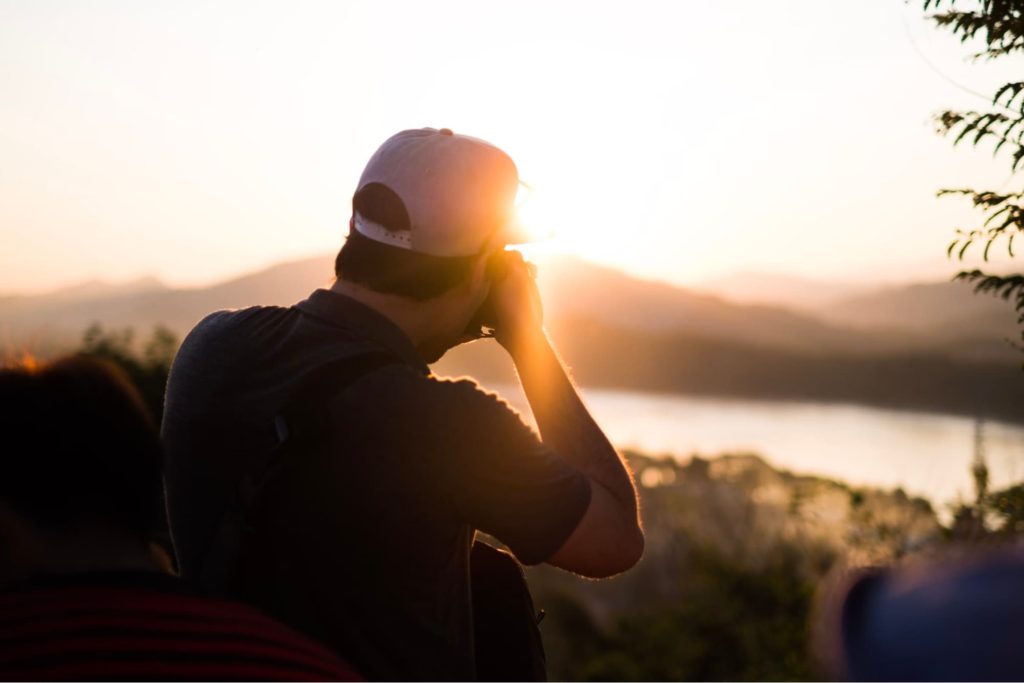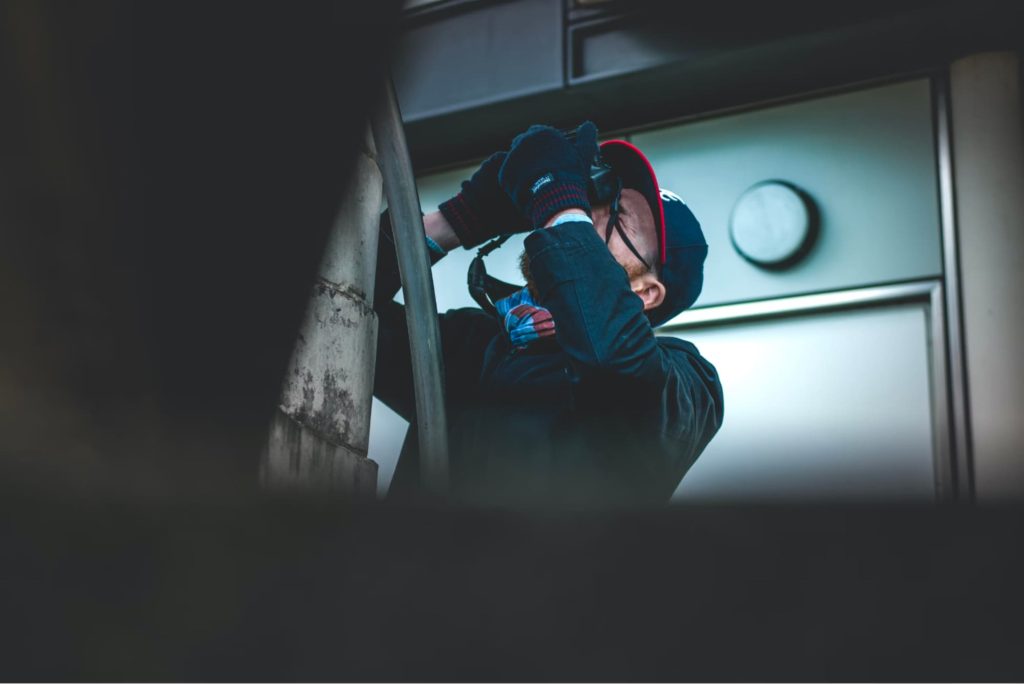What is a Medium Shot? How Do Medium Shots Work in Filmmaking?
In the world of filmmaking, there are certain shot types that are crucial, and are featured in a huge number of videos and films. The medium shot is one of the absolute mainstays of filmmaking.

In this guide, we’re exploring what a medium shot is, and what it tends to achieve in certain scenarios. Medium shots are incredibly common, and once you have analyzed a few of these types of shots, it is likely that you will notice them everywhere.
Medium Shot Definition
Before we delve into the medium shot purpose and use, and different types of medium shot, let’s establish a medium shot definition.
As you may have already guessed, a medium shot is somewhere between a wide shot and a close up. These are among the extremes of framing and shot types, and a medium shot sits somewhere in the middle, making it one of the most common types of shot.
A medium shot often frames the character from their waste upwards, incorporating all of their head and allowing the audience to see gestures as well as facial expressions. A medium shot frames the body enough so that there are details of movement, and we can see certain things about the way a character is moving or gesturing, but it stays close enough to see plenty of detail.
Filmmakers may also want to show you more than just the character’s expression. Perhaps they are holding something, or they have a certain costume. A medium shot in film can be a way to frame actors and show plenty of detail.
The next time you are watching a film. TV show, or even a commercial, there is a high chance that you will see a medium shot used. To recognize the use of this kind of shot, though, you will need to understand the different types of medium shot in film.
Types of Medium Shot
As this is such a common technique, there are a lot of different varieties of the shot. Every single shot used should be deliberate, and in the planning and strategy phases the shots will have been agreed in most situations. This means that when the production crew is making a video, they know exactly what types of shot they need to capture. Storyboards are a way to show roughly how the scenes will look and the framing of each shot will be carried out.
Some examples of medium shots you may hear discussed in the context of filmmaking can be found below:
Cowboy Shot
This comes from old-fashioned cowboy films and is a sign of how cinema has changed (but also retained some of its early techniques).
In this shot, the camera usually frames the subject from the mid-thigh up, including the entire body and often a gun holster as well. It’s called the “cowboy shot” due to its use in old western films, it is able to capture both the character’s upper body and their gun.
Two-Shot or Three-Shot
A shot featuring two or three characters. The framing usually includes both characters from the waist up, facilitating interaction between them. This can be used to show group dynamics or conversations between multiple people. Of course, we can introduce more than three characters too.
Mid-Shot
This is a standard medium shot example that frames the subject from the waist up. It’s often used in conversations or scenes where characters are engaged in actions like sitting, standing, or walking.
Over-The-Shoulder Shot
This shot is usually (not always) a medium shot. It positions the camera behind one character, capturing the subject’s shoulder facing away in the foreground and another character in the background. It’s commonly used in dialogues to establish a point of view, and show us the dynamic between two characters.
Medium Close-Up
As you will have guessed from the name, this sits between a close-up shot and a medium shot.

This shot frames the subject from just above the waist up. It’s closer than a mid-shot but not as focused on a face or single feature as a close-up. It’s commonly used to capture emotions and reactions while still incorporating some of the background.
Medium Long-Shot
Also called a medium full shot, this is an “in-between” shot which is not quite a medium shot but it is not quite a long shot either. It usually shows characters from the knees up rather than the waste up. This can show more detail of the movement and body language of a character, and may also show more of the background.
As you can see from this list of the types of medium shot film makers use, there are lots of different examples. The angle and makeup of the shot can be a space for directors to experiment, even though medium shots are some of the most mainstream shots out there.
Medium Shot Uses – Why is the Shot So Popular?
Medium shots are undeniably among the most popular in cinema, and they are also very popular in other types of filmmaking such as commercials.
Characters and Interactions
Medium shots are often used during conversations or interactions between characters. They allow the audience to see the characters’ body language, facial expressions, and reactions, which are crucial for understanding the dynamics between them. A lot of people don’t realise just how important the use of hand gestures and body language can be. With a close-up shot you may lose some of this.
Showing the Surroundings
A close-up shot may be good for certain aspects of filmmaking but it is easy to lose track of where the character is and the other aspects of the scene.
Medium shots provide a balanced view of characters and their surroundings. While close-ups focus solely on the character’s face, and wide shots capture the environment, medium shots are a happy balance between the two, allowing the audience to understand the character’s context without losing sight of their facial expressions.
Showing Props and Costumes
A lot of time and effort is spent on things like production design, and this shouldn’t be ignored when it comes to the framing of the shot. Things like outfits can help to give the audience an idea of things like the time period or even just help to develop a character through their dress sense and style.
Variation and Interest
In a lot of scenes, using a variety of shot sizes keeps the visual interest alive. Alternating between wide shots, medium shots, and close-ups can maintain a dynamic and engaging visual pattern to the film rather than letting the audience get bored.
Dialogue Continuity
Medium shots are often used for continuity purposes during dialogue scenes. They help maintain visual consistency by allowing characters to speak without constant cuts while still showing their reactions and interactions, plus they make it easier for the audience to understand and follow a conversation, even among a group.
Action and Movement
In action sequences or scenes with movement, medium shots allow the audience to see the characters’ physical movements and gestures. This is particularly useful when characters need to perform tasks. For example, imagine a character doing bicep curls with weights to build their strength, a medium shot can show this action while still showing their face.
Building Relationships and Dynamics
When characters share the frame in medium shots, it can visually establish their relationship and connection. This is especially true in shots like the two-shot or three-shot, where the spatial arrangement helps communicate the nature of the dynamic between characters.
Tension
Depending on how they’re framed, medium shots can create a sense of intimacy or tension. A closer medium shot might emphasize an intimate moment, while a slightly wider one could create a feeling of unease or anticipation. Imagine a character walking around a haunted house with a medium shot following the character from behind. This can build a sense of impending doom and provides another tool for the filmmakers.
Medium Shots Camera Angles

The use of medium shot camera angle choices is also crucial, and can be another way for directors to experiment. A medium shot may have a totally different effect if shot from a high angle or a low angle. For instance, a bad guy in a film shot from a low angle might give them more of an intimidating feel, like they are towering over the viewer. A high angle may have another effect, and show in more detail what a character is doing. For instance, if they are doing something with their hands.
Understanding the Use of Medium Shots
In this guide we’ve explored many of the top uses of medium shots. These are just one of the tools that filmmakers and directors can use to create an interesting and well-rounded movie.
Finding the right shots to provide the feel you are looking for and to create an engaging video can be tough, but our team of professionals are experienced when it comes to finding the perfect shots to showcase a product, tell a story, or bring your visual dreams into reality. Reach out to Insight Studios today to start your visual journey.